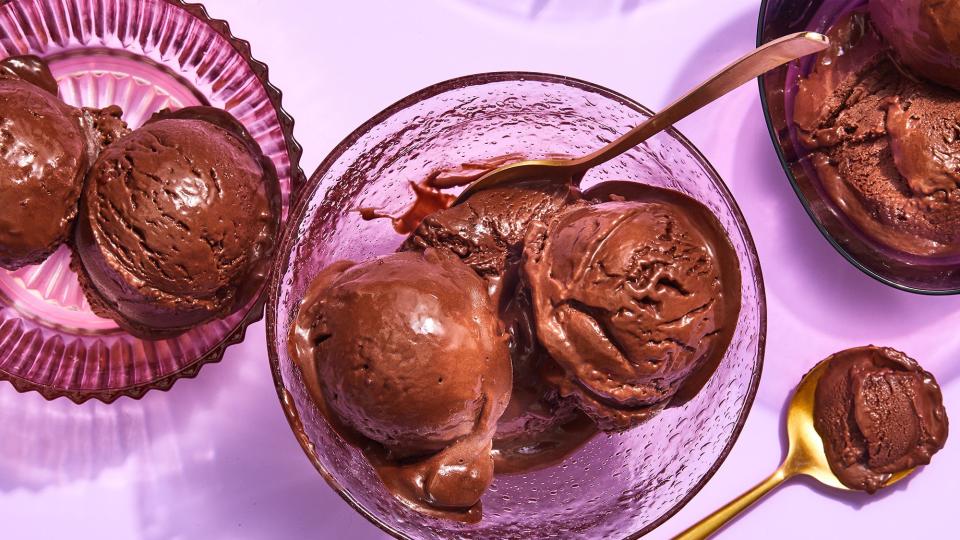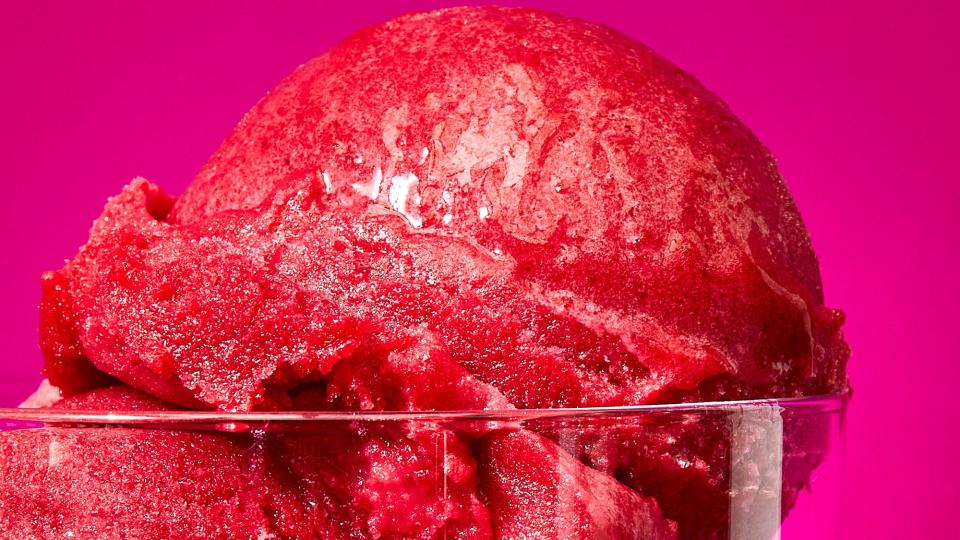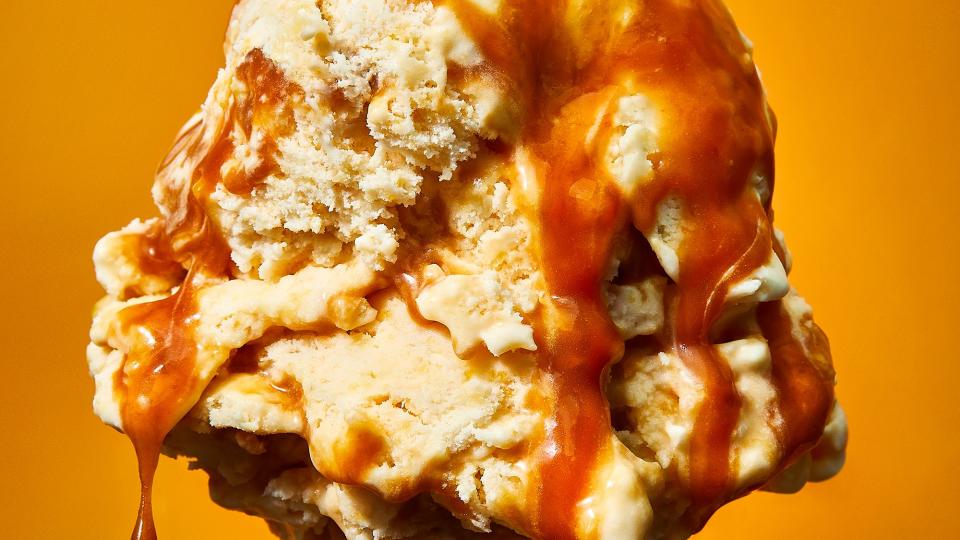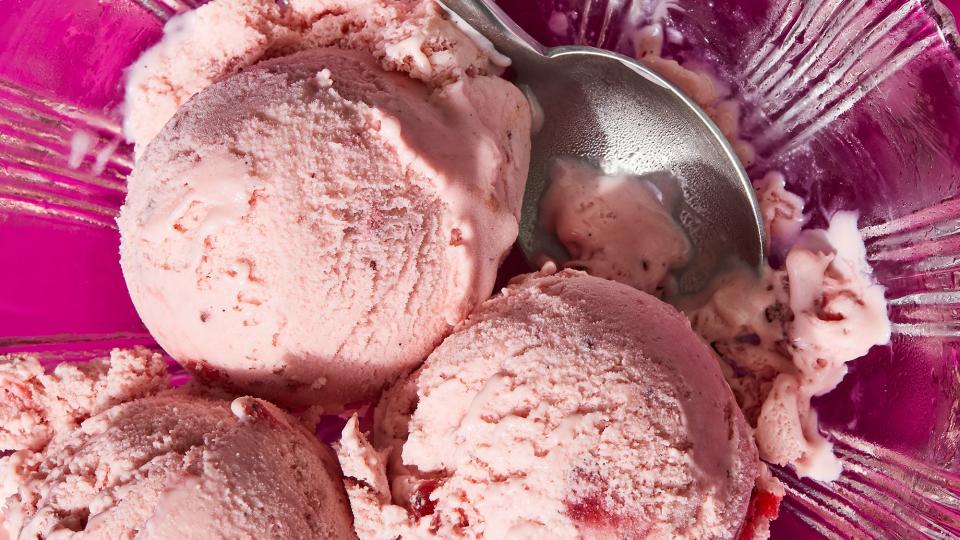The F&W Guide to Making Ice Cream at Home

Photo by Greg DuPree / Food Styling by Victoria Granof / Prop Styling by Christine Keely
From the very first time she churned out a pint of vanilla, watching as a batch of cream turned thick and silky in an ice cream maker, chef Fany Gerson was hooked. "Making ice cream is just as fun as eating it," she says. Gerson loved making ice cream so much that in 2010, she opened La Newyorkina, an ice cream and paleta shop in New York City that drew on her expertise and passion for Mexican sweets and pastries, and later wrote a cookbook called Mexican Ice Cream with all of her tips and tricks.
Here, Gerson shares five fresh-flavored ice cream recipes that each demonstrate a different fundamental approach to making the frozen treat. Although each style of ice cream calls for a slightly different set of ingredients—for example, there are egg yolks in French-style ice cream, while the nondairy recipe is made creamy with the addition of coconut yogurt—Gerson likes to say that there isn't one right way to approach ice cream. However, there are certain guiding principles that will help you along the way, ensuring ice cream that's smooth, creamy, and delicious.
The steps to making ice cream are simple: Create the base, churn the base in an ice cream maker, add any mix-ins, freeze the churned mixture, and let the ice cream harden. It's the in-between moments that can make or break the final product. You'll want to make sure you have the proper ice cream–making tools; see "Tools and Toppings," below. Because the bowl of the ice cream maker has to be frozen in order to use it, Gerson recommends buying a second bowl. As one bowl comes out of the freezer, another can go in to chill. That way, you'll be able to make more ice cream faster.
Another pro tip? "Make sure the storage container is fully chilled before you put the ice cream inside of it," Gerson says. "The coldness of the container will help prevent ice crystals from forming on the ice cream itself." At the very end of the process, when all you'll want to do is dig a spoon into the not-yet-set tub, Gerson cautions against too much taste-testing. "Don't rush it. The more you can let the ice cream sit, the more the flavors are going to come together." It'll all be worth it. —Nina Friend
Vegan Chocolate-Chipotle Ice Cream

Photo by Greg DuPree / Food Styling by Victoria Granof / Prop Styling by Christine Keely
Nondairy ice cream is typically made with alternative milks or non- dairy yogurt to achieve the creaminess of regular ice cream. Gerson opts for a combination of both, calling for unsweetened oat milk or rice milk as well as coconut yogurt. "I don't love chocolate ice cream, but it's my husband's favorite, though he would never order a sorbet. So the challenge here was to make a chocolaty vegan ice cream that isn't a sorbet, has the creaminess of ice cream, and would appeal to both of us. The finished product is as creamy as it gets for being made without dairy, and the flavor combination of chocolate and chipotle, which is smoky and a bit hot, adds personality."
Pistachio Stracciatella Gelato

Photo by Greg DuPree / Food Styling by Victoria Granof / Prop Styling by Christine Keely
Gelato is denser than ice cream, thanks in part to the larger amount of milk versus cream and the slower rate at which it's typically churned. The slower churning pace incorporates less air, yielding a texture that's less fluffy, and the lower percentage of fat makes the flavors taste more intense. Gerson has long been a gelato lover. "There was a gelateria that opened near my house when I was in high school. I thought it was just ice cream, but when I tasted it, I was like, no, there's something very special about this. Stracciatella was always my go-to flavor. In this recipe, I love putting that classic Italian flavor with another traditional Italian ingredient: pistachio. It just works."
Raspberry-Hibiscus Sorbet

Photo by Greg DuPree / Food Styling by Victoria Granof / Prop Styling by Christine Keely
The two main ingredients in sorbet are fruit and sugar—no dairy in sight. (In fact, the thing that differentiates a sorbet from a sherbet is that sherbet contains milk or cream.) This sorbet has a creamy texture even with- out the dairy, thanks to the addition of corn syrup or honey, which increases the sugar content and helps make the final product richer, less icy, and more scoopable. The flavor combination stems from a recipe in one of Gerson's cookbooks, Paletas: Authentic Recipes for Mexican Ice Pops, Shaved Ice & Aguas Frescas. "It's fruity but has a little bit of sourness from the hibiscus. I like that the tanginess heightens the raspberry but also adds a bit of acidity."
Peach Ice Cream with Caramel-Bourbon Swirl

Photo by Greg DuPree / Food Styling by Victoria Granof / Prop Styling by Christine Keely
"This flavor reminds me of when I first moved to the States and discovered classic American desserts, like peach pie," Gerson says. "I thought about making a caramel-based ice cream with a peach topping, but then I thought, who doesn't love a caramel swirl, especially if there's bourbon in it?" American-style ice creams are eggless and are usually made with a combination of milk and cream, sometimes containing cornstarch as a thickener. Gerson's version uses cream (no milk) and crème fraîche or sour cream to balance out the flavors and add creaminess to the fluffy texture.
Roasted Strawberry-Vanilla Ice Cream

Photo by Greg DuPree / Food Styling by Victoria Granof / Prop Styling by Christine Keely
The foundation of French-style ice cream is egg yolks. Egg yolks are added to cream and milk to form a custard base, giving rise to a thick, silky ice cream. According to Gerson, the key to French-style ice cream is making a base so good you could eat it without freezing it. In this recipe, Gerson wanted to celebrate the flavors she grew up eating. "My mom would take strawberries and put a little Mexican crema and sugar on top, and that became dessert. For this ice cream, roasting the strawberries gives a new dimension to the fruit."
Tools and Toppings
Making ice cream at home is much easier when you've got the right equipment—and eating it is more fun when you've got the best sprinkles and sauces. Here, Gerson shares her picks for the tools and toppings that make homemade ice cream a breeze.
Cuisinart Pure Indulgence 2-Quart Automatic Frozen Yogurt, Sorbet, and Ice Cream Maker
"Of all the ice cream makers I've tried, this one gave the best results. It's not terribly expensive and doesn't take up a lot of counter space." $100 at cuisinart.com
SUMO Kitchenware Ice Cream Container
"If you're not going to eat the ice cream right away, I recommend keeping it in an insulated storage container; it'll keep the texture for longer than if it's in a regular Tupperware. I like this one because it's long and shallow. It doesn't occupy a lot of space—you can usually put it in the freezer door—and it gets cold quickly." $15 at amazon.com
Zeroll 1020 Original Ice Cream Scoop, 2-ounce
"The ice cream scoopers that have the lever you press with your thumb break easily, but this old-fashioned one is very durable and makes great scoops." $25 at williams-sonoma.com
Supernatural Sprinkles
"If I'm using store-bought sprinkles, I want to make sure that they're all-natural. These hit that note, and they're colorful and fun." $8 at supernaturalkitchen.com
Sunday Night Premium Dessert Sauce
"I love this hot fudge because it's not cloyingly sweet. You can taste the good-quality chocolate, and it's really viscous and delicious." $12 at sundaynightfoods.com
The Konery Waffle Cones
"I haven't seen any other cone brand playing around so much with fun, interesting flavors—everything from toasted coconut to matcha." Prices vary, thekonery.com
Hot vs. Cold Infusions
Infusing is the process of steeping an ingredient in another ingredient, usually a liquid, to extract flavor and aroma. There are two kinds of infusion: hot and cold. In hot infusions, hot liquid is used to extract an ingredient's particles. The heat helps this happen quickly and fully, often changing the original flavor of an ingredient. (Think, for example, of hot brewed coffee.) In a cold infusion, cold liquid extracts in a slower, more selective process, leading to flavors that are smoother and more aligned with the ingredient's original flavor. (This is what cold-brewed coffee is all about.) With ice cream, there isn't a hard rule about when to use which kind of infusion. Gerson experiments with both methods (that's the best way to determine which you like better for any given ingredient), but she tends to use cold infusion for herbs and citrus zest, like lemon peel in the Peach Ice Cream with Caramel-Bourbon Swirl, and prefers hot infusion for spices, like the vanilla bean pod in the recipe for Roasted Strawberry–Vanilla Ice Cream.

